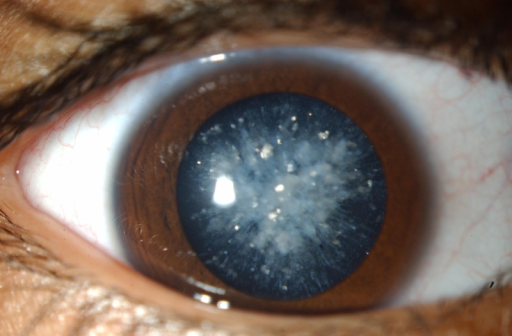They have learned how to fight cataracts in children with stem cells

Cataract - clouding of the lens of the eye. It accounts for almost half of all cases of blindness, with an estimated 18–19 million people blind in the world due to cataracts in the world. Physically, the clouding of the lens is due to the denaturation of the protein that makes up this organ. Cataract affects the eyes of not only adults, but also children. And in the younger generation, this disease occurs quite often.
Treatment is a surgical intervention with the replacement of the lens. A new lens is either transplanted or inserted artificial. Chinese scientists have found that you can do without a transplant, using the existing eye stem cells to restore vision.
It turned out that both children and adults in the eye have stem / progenitor cells that continue to divide. In some cases, these cells can be made to actively divide, with the formation of transparent three-dimensional lens-like structures. It is about the possibility of growing an analogue of the lens right in the patient's eye, without the need for a transplant.
')
The described method has already been tested by scientists in rabbits and macaque pups. At the very beginning of the process, scientists removed the clouded lens, and stimulated the growth of cells, as discussed above. After seven weeks, the eyes of the animals became normal, no clouding was observed, and the animal saw without any problems.
The Chinese were able to test their method in humans, with the permission of the authorities and the parents of the children who participated in the experiment. Total doctors tried to cure 12 children. Everything went well, six months after the experiment, the children's visual acuity remains excellent. In this case, as far as can be judged, the method has no side effects. But when using an artificial lens, they are, because in some cases, the remaining lens cells begin to divide and grow.
The technology can also be used in the case of working with adult patients, since in adults, the regenerative abilities of the corresponding eye cells are preserved. But here everything is a little more complicated, the cataract of adults and children is different, and scientists are now working to improve their method.
Source: https://habr.com/ru/post/391443/
All Articles